Chihiro’s Wish for Peace
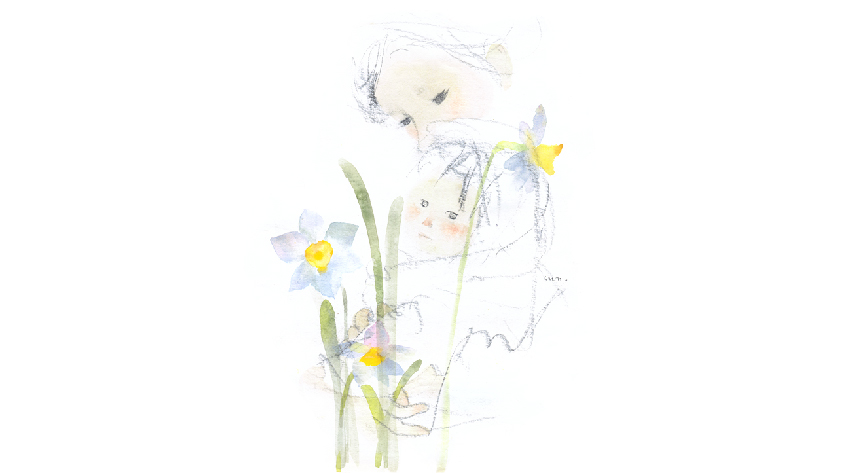
Mother, Baby, and Daffodils, 1972
Peace and happiness for all the children of the world
“My experience of war, an experience that smashed all of the tender dreams of youth, greatly affected the course of my life. I genuinely love peace, abundance and lovely, pretty things and with all my being, I abhor the power that seeks to destroy them.”
Chihiro Iwasaki, 1972
Chihiro, who experienced war in her youth, witnessed its cruelty, which robs children of their dreams, their hopes, and their lives. She was keenly aware that, in war, it is the weakest who are the most vulnerable. After the war, Chihiro became a picture book artist and mother of one child. Expressing her feelings as a mother, she said, “I could not control the love that poured out of me.” Her loving gaze was not directed only at her own child, but also at children around the world. From the 1960s to the early 1970s, as the Vietnam War intensified, Chihiro created picture books based on the theme of war. She did not directly show the misery and brutality of war, but rather depicted children striving to live amidst war, the despair on their faces at the loss of hope for their future. Through such images, one can sense Chihiro’s earnest wish to protect the preciousness of life and peace.
Chihiro and War
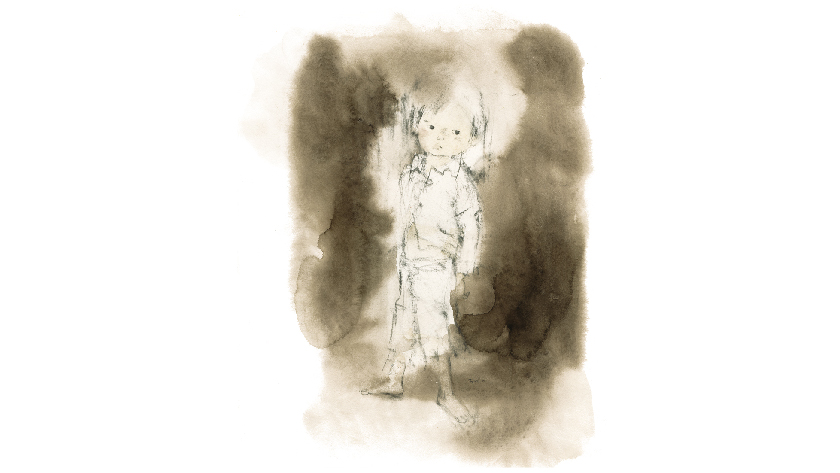
Boy Standing Still, From Senka no naka no Kodomotachi (Children in the Flames of War) Iwasaki shoten, 1972
Chihiro’s experience of Japan’s war
Chihiro was a young girl during WWII. Upon entering an all-girls school at the age of twelve, the Manchurian Incident erupted, and when she graduated at 17, Japan commenced war with the aim of invading China.
Chihiro’s parents were both involved in Japan’s national war plans. Her father was an architect for the military and her mother, after retiring from teaching, worked to send Japanese citizens to Manchuria. Because of the work her parents did, Chihiro’s family enjoyed a privileged life despite the war. However, on May 25, 1945, their house burned down in an air raid and she had to flee for her life in a sea of flames. Chihiro, along with her family, evacuated to Matsumoto City in Nagano Prefecture and it was there that they learned about Japan’s defeat and the end of World War II. She was 26 years old at the time.
After the war, Chihiro learned that the Pacific War was a war of aggression by Japan and that her parents had contributed to it, which was the reason behind the privileged life that they enjoyed. Later, Chihiro said, “It was only after the war ended that I came to understand why wars occur. And that there were people who opposed the war and were thrown into prison. And I also learned that some of those who were imprisoned were killed. My heart was moved. I also realized that their deep love for humanity and their search for the truth made them fight against this war, even at the risk of their lives. ”Through her own experience of war, Chihiro determined that war should never be repeated and wished for the realization of a peaceful world. This desire is evident not only in her works based on the theme of war, but in all of her works.
The Vietnam War and Japan
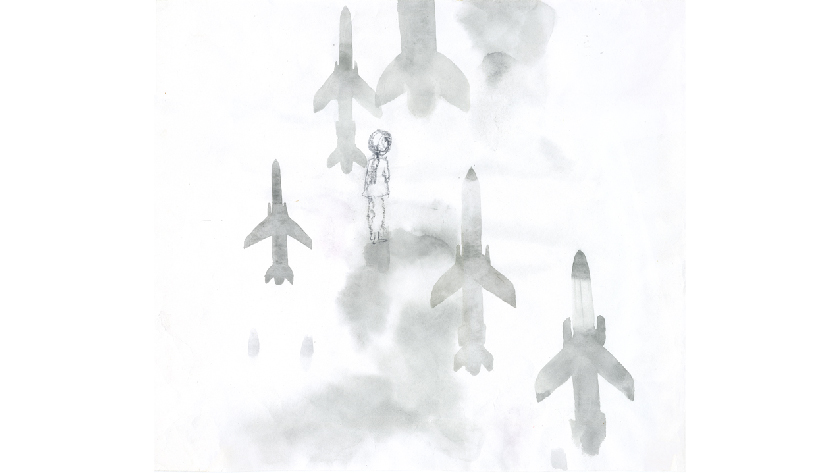
Bombers, From Senka no Naka no Kodomotachi (Children In the Flames of War) Iwasaki Shoten, 1973
Japan’s strong presence in the Vietnam War
As the U.S. Pacific Admiral said that “Without Okinawa, we cannot continue the Vietnam War”, Japan served as an important rear vase for the U.S. Army. From Kadena Air Base in Okinawa, under the U.S. occupation, the B-52 stealth bombers flew out and dropped rains of bombs on Vietnam. Also Japan manufactured bombs and toxic gas, military uniforms, bags to carry corpses, cars, electrical equipment and other supplies needed for the U.S. Army enriching the Japanese industry with so called “Vietnam War Special Procurement”.
On the other hand, as the Vietnam War harshened, the anti-war movement inside Japan grew. Myriad of activities such as anti-war meetings, demonstrations and collecting funds to aid the Vietnames people took place.
Chihiro and the Vietnam War
In 1967, in the midst of Anti-War movement, Chihiro illustrated Watashi ga Chiisakatta Toki ni (When I Was a Child), a picture book featuring poems and texts written by children who experienced the bombing in Hiroshima. In this picture book which was her first picture book with the theme of war, there is Chihiro’s wish for the young generation who has not experienced war to know about the tragic character of war. In 1970, for the street exhibition organized by the Association to Help the Children of Vietnam, she participates with a poster work on which she wrote “Peace and Happiness for the Children of Vietnam, Our Children in Japan, Children of the World”. Chihiro illustrated two picture books with the theme of Vietnam War. The first picture book Kaasan wa Orusu (Mother is not at Home) was published in 1972, when the American bombing on North Vietnam was the most harsh. On the same year, Chihiro exhibited three pictures titled “Children” for a group exhibition. While many other artists exhibited their works already published in picture books or illustrations, Chirhiro submitted her new works with a different touch compared to her previous works. She once said “To me, even if a child is all muddy, or wearing torn clothes, he/she seems like a beautiful and dreaming child.” And always painted children beaming with the light of life. But the same Chihiro here painted children who with faces of empty expressions. In these three “children” her anger and sorrow for the war can be felt. “Children” became a start for the second book with the theme of Vietnam War, “Children in the Flames of War” published the next year in 1973. Though here illness and hospitalization interrupted her preparation, she completed the book hastily saying “this is the only way I have”. In 1974, one year after she finished “Children in the Flames of War”, Chihiro passes away. Vietnam saw the end of war in April 1975, eight months after her death.
Picture Books Embodying Chihiro’s Wish
From the late 1960s through the first half of the 1970s, Chihiro created three picture books on the theme of war. Through these books, she expressed her wish for peace and happiness for children.
The Picture Book Watashi ga Chiisakatta Toki ni (When I was a Child)
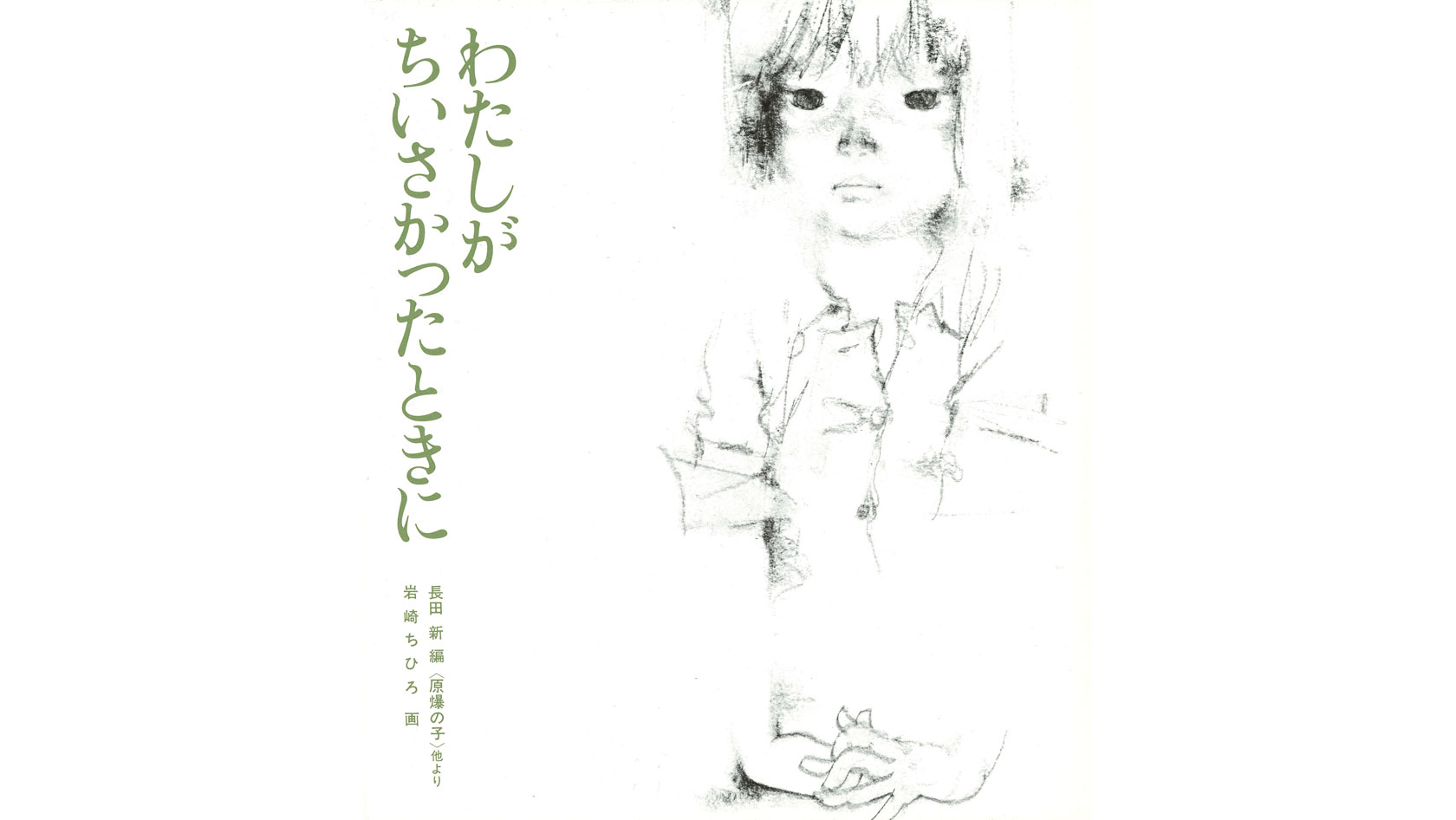
On August 6, 1945 an atomic bomb was dropped on Hiroshima and on August 9, another fell on Nagasaki. Within a few years of the bombing, more than 340,000 people died and even today, many are suffering from harmful effects of radiation.
This picture book contains poetry and compositions written by children who experienced the atomic bomb explosion in Hiroshima in 1945. When Chihiro visited Hiroshima to prepare this book, she could not sleep at all, thinking of the lives of those who passed away.
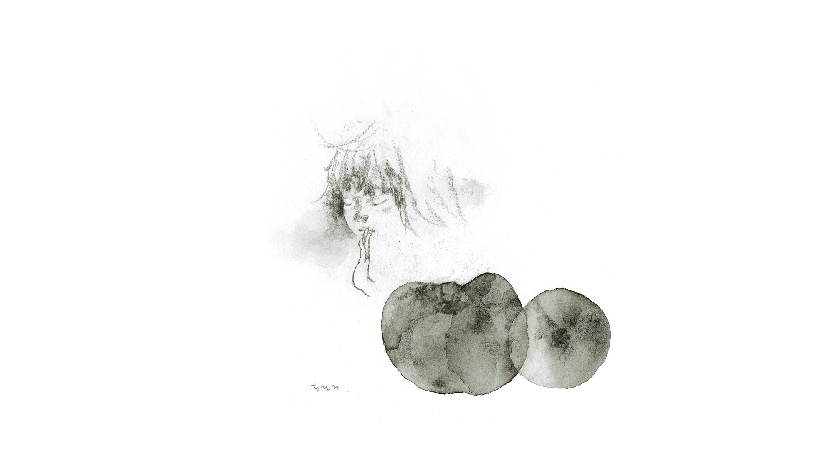
The Girl and Tomatoes, From Watashi ga Chiisakatta Toki ni (When I was a Child), Doshinsha, 1967
Instead of dead bodies and wounded children, this book shows children playing, a baby wrapped up in an air-raid hood, a blind mother holding her dead baby, along with other mothers and children who were alive in Hiroshima on that day. After completing the book, Chihiro said, “As we read the notes that the children left, we can vividly see the misery of the war. I think that my role is to show how adorable these children were—the children who were dragged into the war.”
Untitled, Tomoko Sato, 5th Grade Girl
My little sister Yoshiko was
burnt and was lying in bed.
She said that she wanted to eat
tomatoes.
So mommy went out,
to buy some,
and when she was gone,
little Yoshiko died.
“I could give you nothing but
potatoes, and you died.”
said mommy, and she cried.
I also cried.
Everyone cried.
Tomoko Sato
5th grade girl
From Watashi ga Chiisakatta Toki ni (When I was a Child) by Tokomo Sato
The Picture Book Kaasan wa Orusu (Mother is not at Home)
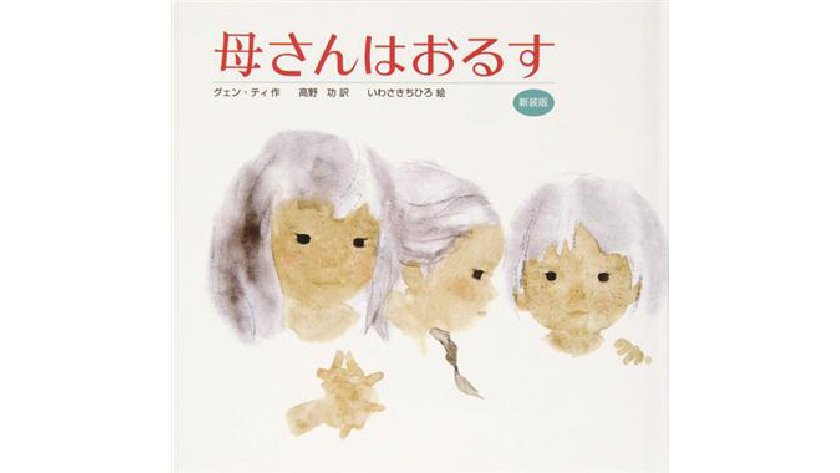
During the Vietnam War, which lasted from 1965 to 1975, more than 1 million Vietnamese people died, and it is said that about half of them were children.
The picture book Kaasan wa Orusu (Mother is not at Home) was published in 1972, during the Vietnam War, when the U.S. military was repeatedly and indiscriminately bombing throughout Vietnam.
The story, written by Vietnamese author Nguyen Thi, focuses on the lives of five sisters and brothers, who live resolutely while awaiting their mother, who goes to the battlefield every day to defend their homeland.
Chihiro said, “Even the children on the battlefield, when I look at photos of Vietnam, I can’t begin to describe how adorable they are.” Believing that “all children are the future,” she vividly depicted these adorable children, living their lives guilelessly and to the fullest while hoping for a better tomorrow amid the worsening war situation.
In January 1973, while working on her next picture book, Senka no naka no Kodomotachi (Children in the Flames of War), Chihiro published the following poem in a local newspaper distributed by Kyodo News.
Always I see in my mind
Children whose mother
Goes out to the battlefieldEven if their mother
Comes home today
Nobody knows whether
She will return tomorrow
And even if she does come home tomorrowNobody is sure that bombs
Will not rain down upon the faces of the children
Before she returnsWho sends bombers to Vietnam
The country south of Japan?Mothers of Japan
Gentle-hearted mothers of the world
Please protect these children
While their mother is away
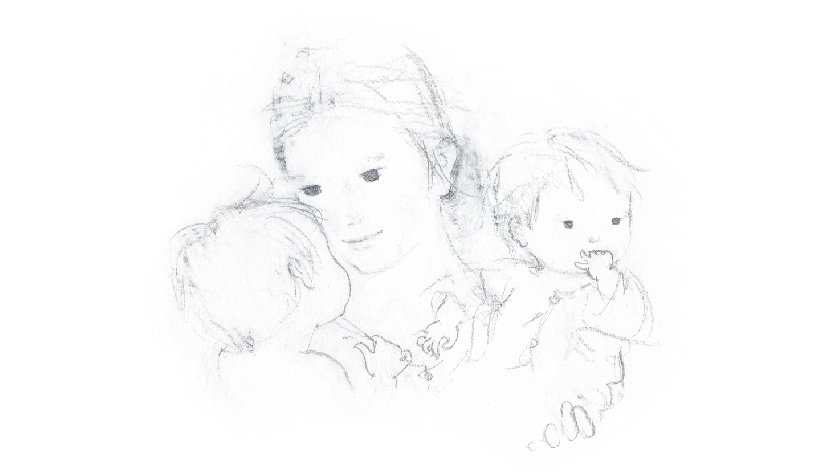
The Mother Holding Her Little Sons, from Kaasan wa Orusu (Mother is not Home), 1972
The Picture Book: Senka no naka no Kodomo-tachi (Children in the Flames of War)

Chihiro began illustrating Senka no naka no Kodomotachi (Children in the flames of War) from 1972 to 1973, during the final stages of the Vietnam War, when the entire country was being heavily bombed. At the time, she said, “The reason why I’m in a hurry to continue illustrating books on Vietnam is because if I don’t do it now, I’m afraid all the Vietnamese people, and all those children would disappear. So, I have to finish these pictures as soon as possible.” Chihiro began working on this book soon after completing Kaasan wa Orusu (Mother is not Home). The fact that the bombers flying daily over the heads of Vietnamese children were launched from U.S. air bases in Japan greatly pained Chihiro. When creating this picture book, she thought about those children while recalling her own experience of World War II. Chihiro, who was already in poor health when working on this picture book, passed away on August 8, 1974, one year after finishing the book, without knowing the end of the Vietnam War. Senka no naka no Kodomotachi (Children in the flames of War) was the last picture book that she completed.
Last year, the year before last, and the year before that,
Red cyclamen flowers
Gave a touch of color
To my winter workroom.
One by one, as each burst into bloom,
They would exchange glances with me as I worked.Last year, the year before last, and the year before that,
Bombs rained down upon the faces
Of Vietnamese children.In the pellucid petals
Of red cyclamen I see them,
The children who died―
And with their eyes they speak to me:
All we ever knew was war
Our whole lives long.From Senka no naka no Kodomo-tachi (Children in the Flames of War), Iwasaki Shoten, 1973
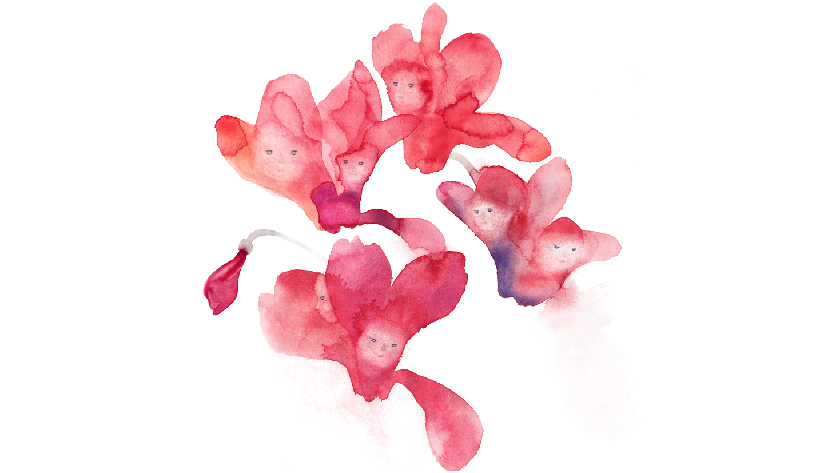
Children among Cyclamen Flowers, From Senka no naka no Kodomo-tachi (Children in the Flames of War), Iwasaki Shoten, 1973
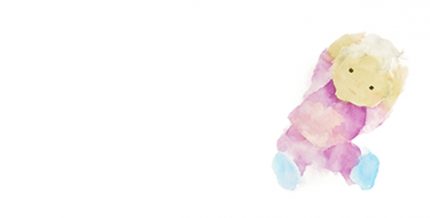
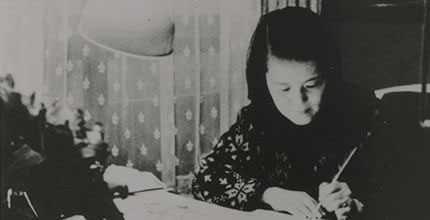


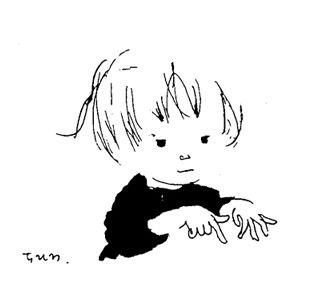
SNS Menu